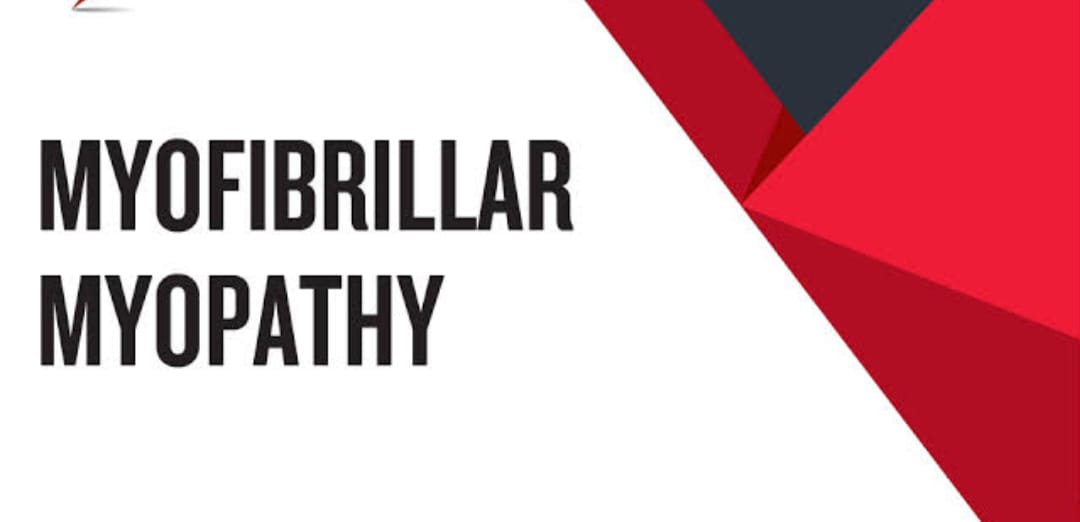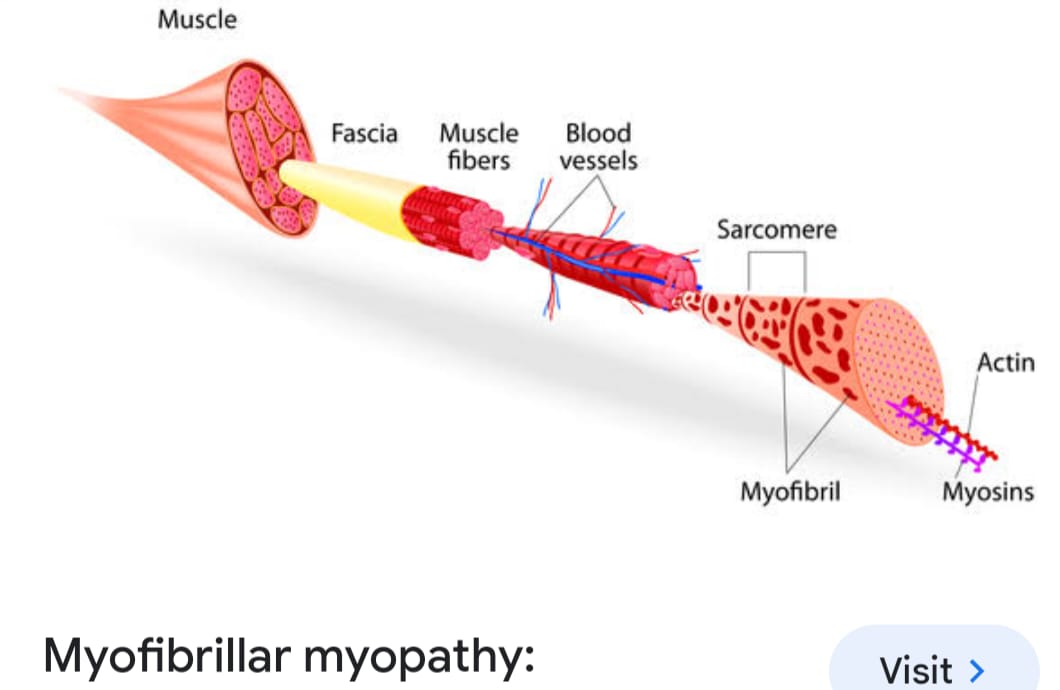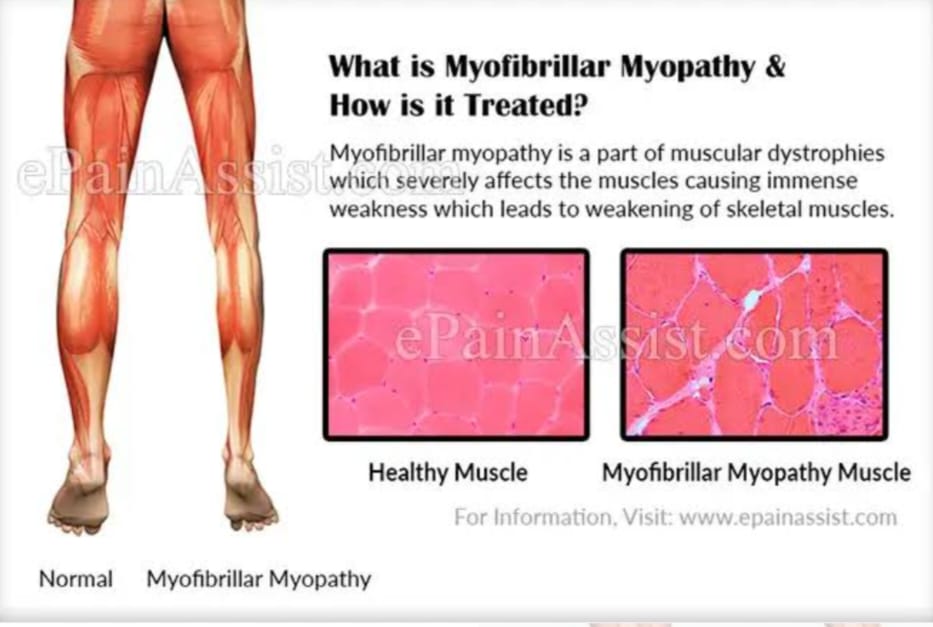Myofibrillar Myopathies
Myofibrillar myopathies are a group of rare genetic neuromuscular disorders that may be diagnosed in childhood but most often appear after 40 years of age. These conditions are highly variable but are characterized by a slowly progressive muscle weakness that can involve skeletal and smooth muscle. Skeletal muscle weakness can be present in the muscles close to the center of the body (proximal) as well as the distal muscles. A weakening of the heart muscle (cardiomyopathy) is common and may manifest as arrhythmia, conduction defects or congestive heart failure.
The signs and symptoms of myofibrillar myopathy vary widely among affected individuals, typically depending on the condition`s genetic cause. Most people with this disorder begin to develop muscle weakness (myopathy) in mid-adulthood. However, features of this condition can appear anytime between infancy and late adulthood. Muscle weakness most often begins in the hands and feet (distal muscles), but some people first experience weakness in the muscles near the center of the body (proximal muscles). Other affected individuals develop muscle weakness throughout their body. Facial muscle weakness can cause swallowing and speech difficulties. Muscle weakness worsens over time.
Other signs and symptoms of myofibrillar myopathy can include a weakened heart muscle (cardiomyopathy), muscle pain (myalgia), loss of sensation and weakness in the limbs (peripheral neuropathy), and respiratory failure. Individuals with this condition may have skeletal problems including joint stiffness (contractures) and abnormal side-to-side curvature of the spine. Rarely, people with this condition develop cataracts.
The frequency of myofibrillar myopathies has not been estimated. It is likely that these conditions are unrecognized and underdiagnosed.
Diagnosis
A diagnosis of myofibrillar myopathies is made based on clinical findings, electromyography, nerve conduction studies and muscle biopsy. Molecular genetic testing for the DES, CRYAB, MYOT, LDB3 and ZASP genes is available to confirm the diagnosis. Molecular genetic testing for the BAG3 gene is available on a research basis only.
Treatment:-
Homoeopathic remedy has proven that there is a way to lead a healthy and normal productive life for myofibrillar myopathies. Good diet and homeopathic remedy found to be very effective and successful in these patients.
It is found that, with the start of medicine there is gradual improvement in the patient’s condition with marked improvement in muscle strength, cardiac muscle, improved sleeping and eating patterns and weight gain within 1-2 months. Early initiation of treatment in the course of this disease can help a lot in reducing future disability and prolonging survival. One can notice symptomatic improvement within 3-4 months of treatment. Duration of treatment varies with the severity of disease. Homeopathic Medicine is strongly recommended!



